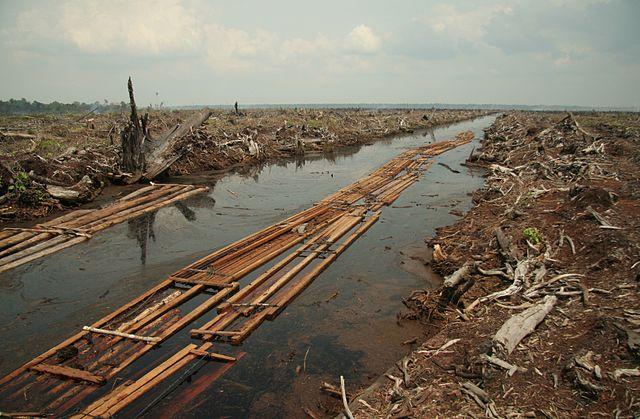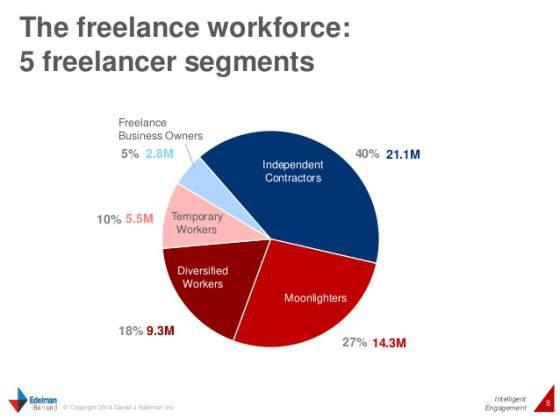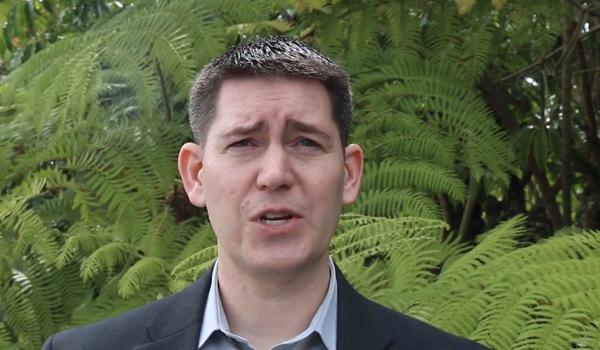Empowering sustainable change - making it happen


You are unique, your organisation is unique. Any empowerment campaign is about your journey to generate positive and sustainable change for your organisation, writes Carbon Smart's Adam Woodhall.
If you want to empower your colleagues, the first person that must be empowered is yourself! Your colleagues will unconsciously look to you as a model and the unconscious is very powerful at feeling things the conscious brain doesn’t see. Therefore if you start an empowerment campaign without ensuring you are in a good place, then your colleagues will sense the incongruence.
Leading sustainability is an amazing opportunity for self-expression; however it can feel burdensome at times with the expectations laid on your shoulders by stakeholders internal and external. You have limited time, resource, budget, authority and energy, and sometimes it feels like the demands on you are limitless. If you are feeling disheartened, then take some time out to re-connect with your purpose and passion, ask yourself questions such as: “what brought me to this place?”; “how could I look positively on this?”; “why do I want to empower change?”; “who can I turn to support me?”.
When you feel empowered, consider how your unique abilities can generate empowerment. There are many skills and characteristics that will support your programme, such as facilitating, connecting, enabling, persuading, evaluating, catalysing and holistic thinking. You don’t need to be strong in all of these, but you do need to be aware of the weaknesses and gain support from others who are strong in them.
You’ve now understood yourself, (re)connected with your passion and identified your strengths and weaknesses. Now the really fun part starts: you can start looking outwards to develop a robust approach, such as the ‘Smart Change’ process of “Ignite > Empower > Grow”.
Ignite
This first phase is the most important, as it is when you get the opportunity to connect with the reality of your organisation and listen to the underlying narratives that flow through its culture. You will be preparing the campaign to hit the ground running when it is launched. To generate this springboard, there is one silver bullet at your disposal on which everything else hinges: the power of asking questions.
To prepare, you will already have been asking yourself powerful questions and in the Ignite phase, you will be asking some to your colleagues. This is effective because it is sending the message to both yourself and your colleagues that you don’t have all the answers. Often, you only need to start asking good questions, and they will start to generate the solutions themselves. Also by tuning into your organisation you are feeling what they need. Whilst it is important to get statistics for this, you can only truly do this if you are talking to your colleagues.
As part of evaluating your situation, you will also have the opportunity to begin building a coalition of stakeholders who will support you on the journey. It is important that you gain a diversity of opinion to avoid any form of group think. It goes without saying that if you ask good questions, you will also need to be a great listener, to truly and humbly accept what feedback and solutions your colleagues are offering you.
Now you can start to develop a narrative that will inform your empowerment strategy: it is critical that you have a story that flows effortlessly through, ensuring that it is aligned with your organisational culture and starts where the organisation is (not where you want it to be). Of course there will be measurement tools and you will use the available ‘hard’ data, but these are there to help you tell the story. The strategy can’t appeal to everybody equally, there will be conflicting motivations, not just between departments and sites, but also between individuals. For example, people have a desire to take care of our planet and each other, but the current demands of the market encourage them to make more selfish decisions.
Empower
The ‘Empower’ phase is both the most exciting and emotionally challenging; you get to find out if the ‘Ignite’ phase work has created a programme that will truly empower change or just engage them. Whilst engagement is important, people can be engage, but not do much. You’ll start off this phase by communicating the need and creating some level of urgency to act. Short term wins begin to appear, and you can use these to celebrate success and generate momentum.
However well you asked questions, listened to the feedback, created a robust coalition and crafted a carefully aligned strategy, you will still have setbacks which you can accept and learn from. Part of your personal journey is not to take this process too personally: feeling hurt due to unseen bumps in the road, or letting successes go to your head will disconnect you from the very people you are looking to empower.
Grow
This phase requires the most persistence, and is ultimately the most rewarding, as it is when you really see your empower change programme deliver full ownership. There will be constant communication where value is being demonstrated, gains are being consolidated and stakeholders are communicating their successes and challenges. Your role is to be that of a patient gardener, where you are tending your patch and cultivating sustainability.
Until now you’ve been a key driver in the process, part of your personal journey is allowing yourself to step back, breathe, relax, take in what you’ve achieved, and enjoy what you’ve built.
Empowering change is the core of sustainability: it is taking your organisation from where it is now to a place where it is positively contributing to the flourishing society we live in. You have a fabulous opportunity to create a lasting legacy and grow personally. I wish you luck on the journey!
Adam Woodhall is the author of the guide ‘Empower Change’ and associate director of Carbon Smart. You can email [email protected] for a PDF of the guide or find out more here.
Energy efficiency proves critical to sustainable shopping centres


New research shows that shopping centres that invest in energy efficient features boost their market value by up to, and over, 5%.
The research from BCSC (British Council of Shopping Centres) and its research partner CBRE, the global real estate advisor, spanned 35 UK shopping centres to investigate the dynamic between energy efficiency and asset value.
The results, which are backed by EU data, are most pronounced for older shopping centres (those over 25 years old) with potential gains of over 5%. For an average £100m shopping centre in the UK, this translates into a new market value of at least £105m when energy-intensive equipment is replaced with new apparatus that offers energy-saving features as standard. The report also highlights that failure to undertake energy efficient investments, in whole or in part, risks effective loss of value of £5m.
In addition, substantial savings associated with investing in new energy efficient equipment, come from both increased energy efficiency and lower maintenance costs. The biggest savings are derived from replacing the lighting, escalators, lifts and heating, ventilating systems, and air conditioning (HVAC) units.
Rebecca Pearce, EMEA head of sustainability, at CBRE, commented: “Shopping centres are one of the biggest single contributors to CO2 emissions in the UK commercial property sector. To finally have evidence to prove that energy efficiency is not just a costly exercise without financial benefits is massive for our industry.
“This needs to serve as a wake-up call to developers, investors, owners and all associated stakeholders that energy efficiency and sustainability isn’t a fad. It’s here to stay, adds real value when implemented properly, and is business critical to the lifecycle of shopping centres. Essentially, if no action is taken owners should expect value erosion or price chipping by future prospective acquirers.”
Acces the full report here.
Picture credit: © Clearvista | Dreamstime.com
Ford to Focus On Urban Cyclists


Ford Motor Co. seems to know that driving privately-owned cars will not be the key of efficient urban mobility. As well as initiatives such as Ford's car-sharing pilot, navigating the busy streets of the future will probably involve a return to bicycling, for at least a part of a modern multi-modal transportation system.
At last week's Further With Ford conference, hosted this year in Silicon Valley, bikes were prominent in the automaker's thinking -- noteworthy enough to feature in CEO Mark Fields' keynote address. In addition, a number of employee-designed prototype folding e-bikes, suitable to fit in the trunk of Ford vehicles, was on display: the product of an internal competition among Ford employees to come up with innovative designs. Ford's interest in two-wheeled transport is most likely a smart move as cities will inexorably become more dense and congested.
In a data-driven world, though, while Ford admits it knows an awful lot about the habits of car drivers, conversely, it knows very little about how bike riders navigate the often unsafe streets in urban environments. To address this knowledge gap, Ford is about to launch its Info Cycle project, which will involve gathering intelligence on the cycling habits of a selected group of urban riders. To do this, the company will put a small device onto a bicycle's front fork, which bundles together off-the-shelf sensors, allowing it to record data as the cyclists go about their days.
The device contains GPS, light, accelerometer, temperature, altitude and humidity sensors to track a range of environmental variables. As this information is captured, it can be sent via Bluetooth to a smartphone, or a handlebar-mounted tablet, which can provide useful data to riders.
At the same time, Ford will be able to determine riding patterns on aggregate and see how riders respond to changing environmental factors. For instance, the light sensors might be able to reveal how routes through cities change depending on the available light. The accelerometers, in conjunction with GPS location, might reveal where potholes are located as bikes detect irregularities in the road surface.
A representative from Ford told me that the company is not exactly sure what it expects to find out from the project, or even what business opportunity may result; after all, until it gains intelligence from the endeavor, it has to keep an open mind. However, Ford thinks there is probably a "safety story" that will result from the experiment, which could lead to safer urban mobility.
For example, city officials might benefit from the findings. What if information on poor street-lighting correlates to an avoidance of certain routes after dark? Officials might be able to take the opportunity to offer better street-lighting, for example, to encourage a distribution of traffic to quieter, though previously poorly-lit, streets. Alternatively when poor road surfaces are revealed as a result of the accelerometers consistently being triggered by bumps at the same spots, cities could quickly make improvements to road surfaces or bike lanes, by knowing exactly where those trouble spots exist. Possibly, too, the system might be enhanced by analyzing lean angles on the bikes, which could indicate if a rider has fallen off, automatically triggering a message to the rider to confirm if they are safe.
While there are many cycling apps out there for athletes to track their fitness data, this project will instead build a different sort of data set for urban cyclists. Ford plans to find a thousand cyclists this year willing to attach the devices to their bikes and begin gathering information in multiple cities.
Image credit: Picture taken by author
Lumber Liquidators Caught Selling Illegal Wood


When companies do good, they should be rewarded. Likewise, when companies do bad, they need to be punished. Lumber Liquidators needs be held accountable for selling timber harvested from illegal sources, putting ecosystems at risk.
One of the biggest issues in the world is deforestation. It is destroying critical habitat for species and is a major source of greenhouse gas emissions. There are many driving forces behind deforestation – agriculture, natural resource development and urbanization, for example – but there is one cause that should no longer be acceptable in a world of technology and supply chain management: illegal timber harvesting.
Yet, one of America's largest timber wholesalers just got caught being a conduit for illegal timber and, by association, deforestation. From Sierra Club:
“In 2013, federal agents raided the offices of Lumber Liquidators, one of the nation's largest hardwood flooring retailers, investigating allegations that the company knowingly imported wood products illegally harvested in the Russian Far East. These forests are critical habitat for the last 450 wild Siberian tigers.”
Thankfully, there is a strong law that protects forests globally and can be applied to punish Lumber Liquidators.
“The Lacey Act, passed in 1900 to combat the illegal wildlife trade, was strengthened to fight illegal logging in 2008 -- and it’s these forests’ best defense. If adequately enforced, the law would ensure that wood products have been sourced legally and violators like Lumber Liquidators would face fines or jail time.”
It is crucially important that Lumber Liquidators is held responsible for what it did. There are hundreds of companies that have signed non-deforestation commitments, such as Unilever, and who have invested millions to ensure that their commitments are enforced. They are the reason that laws like the Lacey Act exist.
If Lumber Liquidators gets away with this, it will not only lead to more deforestation, but it will also weaken the will of other companies to implement strong supply chain management. Voluntary commitments are good, but legal enforcement is necessary when especially egregious acts are committed.
Sierra Club is pushing for the Department of Justice to punish Lumber Liquidators fully. Click here to join their call.
Image Source: Wikimedia
Monsanto Tests the Waters with Reddit 'Ask Me Anything' Session
Where do you go if you are a major corporation like, say, Monsanto, and want to tell your story in your own words? These days, connecting with your target readership can feel a bit like negotiating a mine field: major media may hear what it thinks makes a headline, but is it the message the company feels is newsworthy?
Last Thursday, Monsanto took a stab at circumventing that danger zone with a one-on-one chat session on Reddit. This isn't the first time the agrochemical industry turned up on Reddit's popular Journal of Science. Last year, Cathleen Enright, executive director of the Council for Biotechnology Information, took a seat at one of Reddit's "Ask Me Anything" (AMA) sessions and fielded questions on the genetically-modified food industry. As Enright put it, the session was a way of providing "real-time, unmoderated conversation" on the questions surrounding GMO.
This year's AMA was a bit different. Dr. Fred Perlak, former head of operations for Monsanto Hawaii, logged in to answer the weighty scientific questions -- the kind of things we may not think about when we open that box of cereal containing GMO ingredients or tear open that candy bar, such how to combat insect resistance; Monsanto's concept of biodiversity and the controversies that surround that question; and where and how the company grows its seeds. With Hawaii's year-round growing climate, its fertile islands have become essential to the company's seed industry, providing a breadth of research on the challenges of meeting a global GM demand.
The AMA was a big hit. More than 2,400 comments were logged by doctors, biologists, grad students and farmers. Topics ranged from the biochemistry behind GMO, to the anticipated future of the technology. One reader highlighted Monsanto's earlier tendency to pair scientists and marketing specialists together in a "buddy system" and the benefits that emerged on both sides of the house. Another noted the uncomfortable contrast in predictions made on Monsanto's application to the FDA, which stated that "glyphosate is considered to be a herbicide with low risk for weed resistance." More than a decade later, however, Monsanto knows differently.
"IMHO [in my humble opinion], resistance to glyphosate is probably inevitable by some weed species," conceded Perlak in the AMA. And, he pointed out, that's a fact that isn't limited to GM crops.
One question that didn't appear to receive an answer is the viability of GMO livestock. The questioner noted that GMO have already been fish developed, but the company that engineered the technique failed to get approval. Was this something that Monsanto was pursuing, and would its leverage be a plus in developing this industry? The question appeared to have gotten lost in the thread and, sadly, wasn't answered.
But Perlak, who now is part of Monsanto's pipeline, strategic partnerships and sustainability team, indicated that the company is surging ahead with new ideas, such as drought-resistant crops and new, more adaptable forms of soy beans.
It also has some challenges to overcome, one of which is insect resistance, Perlak said.
"I think we will see virus resistance for a number of crops -- their arrival to the market depends on public acceptance, which is why talking about the science is so important," he wrote on Reddit.
And the company is also still trying to master the concept of producing food that actually has better nutritional value. "Its going to take time," Perlak admitted.
He suggested that a major stumbling block toward such innovation is the public's perception of GMO foods. Overcoming that issue, he said, is crucial.
"[If] you want to influence the industry you have to help people understand the science so that they are not afraid," Perlak wrote.
While the AMA probably didn't hit on a lot of the questions the average person might have about GMO technology, Perlak's candid answers were a great first step toward educating the public on the more mysterious elements of transgenic engineering. He also didn't shirk at questions that acknowledged some public distrust of whether Monsanto is being transparent about the safety of its technology.
"[The] heart of your questions is are we being transparent and can you believe us?" acknowledged Perlak, who said he takes heart in the fact that there are efforts throughout the world to ensure that transgenic technology and products are used and marketed wisely. He said he felt confident that safety measures were being taken through adequate testing and research.
According to Perlak, this AMA was Reddit's idea. Hopefully the concept will plant the seed for further Reddit discussions by Monsanto, in which readers can ask questions they feel haven't been answered. As last Thursday's AMA demonstrated, transparency and candidness seem to be valued, and go a long way in winning the ears and trust of avid readers.
The full transcript is available on Reddit's Journal of Science site.
Image credit: Dag Terje Filip Endresen
'Jobbaticals' Catching On with Young, Mobile Workers


The nature of employment and the way Americans work has changed dramatically in the span of just two generations. Back then, changing companies, much less career tracks, was almost unheard of and very much frowned upon. Fast forward to today, and we find that research from Freelancers Union pegged the number of freelance contractors working in the U.S. at more than 53 million -- just over a third of the national workforce.
Flexibility, adaptability and the ability to quickly move up the “learning curve” have gained much value in an increasingly globalized labor market and highly specialized and services-driven U.S. economy. Flextime and working from home, as well as freelancing, are much more common. Similarly, more Americans are choosing or have little or no choice but to change companies and shift job types over the course of their working lives.
Temporary employment agencies have seen their businesses expand tremendously as a result. Innovative startups such as Jobbatical are taking things a step further. Looking to match qualified individuals with young, growing startups, Jobbatical offers paid internships and temporary employment, typically from six months to one year in duration, to young job seekers the world over.
Matching job-seekers with temporary jobs at startups
U.S. businesses – large, multinational corporations in particular – just don't take the same attitude to hiring and employment that they did only a generation or so ago. A massive number of people have entered the global labor force as the coincidence of "digitalization"; financial and business deregulation, the fall of the Berlin Wall, and rapid industrialization in countries such as the BRICS has resulted in a globalized economy.
In turn, this has driven labor costs down and shifted the balance between labor and capital decidedly in the favor of capital. It also enabled multinationals to hire workers, as well as invest in fixed assets such as manufacturing plants, pretty much wherever they deem provides the greatest value.
Furthermore, many young adults with college and post-graduate degrees are looking for more than a job that pays well – they're searching for rewarding work with companies that help better society and promote environmental sustainability.
A young, successful Estonian inventor and entrepreneur, Karoli Hindricks, her brother Ronald and Allan Mäeots co-founded Jobbatical to provide a means by which young adults could gain valuable work experience by taking on paid, short-term employment with startup companies looking to hire and grow. Raising an initial $250,000 from a diverse, international group of angel investors, a beta version of Jobbatical went live in October 2014.
Some 7,000 indviduals and more than 600 employers have joined the Jobbatical community to date. “Jobbaticals” typically run from six months to one year, Marketing Chief Isabel Machiko Hirama explained in an interview. Though temporary, they can, and have, resulted in full-time employment. “Jobbaticals,” she said, “are sort of like dating before marriage – a six-month or one-year date.”
Jobbatical employers tend to be startups in the Internet and high-tech sectors looking to develop and grow. They include some high-profile European companies such as Transferwise.
Tapping into the freelancing trend and emerging tech hubs
When it comes to Jobbatical job-seekers, more than half are software developers. That said, companies posting Jobbatical openings are looking “for tons of people,” including marketing specialists, Hirama added.
In addition to the freelancing trend, Jobbatical aims to tap into labor markets in emerging high-tech hubs. Most Jobbatical listings are for on-site positions, though some are remote or require periodic visits. Some employers offer Jobbatical seekers a choice of working in international cities, including Barcelona and Shanghai.
Companies based in Singapore, in fact, have posted the most Jobbatical openings. Singapore and other countries, such as Slovenia, she continued, really aren't on job seekers' radars.
Young Estonian companies are using Jobbatical to find qualified job candidates for temporary assignments as well. “Estonia,” Hirama pointed out, “is really a high-tech country – the government has enabled everyone to do practically everything online, from paying taxes to voting ... There's almost no bureaucracy, and there's a growing tech startup scene.”
Still in beta, joining Jobbatical is free, and it will always be free for job seekers, Hirama added. Once it emerges from beta, employers will need to pay a small fee to list openings. In return, Jobbatical copy-edits and formats employment listings and publishes them on the site.
Jobbatical is also developing a premium service for employers, Hirama continued. For a bit more, Jobbatical will screen candidates and forward a short-list on to employers given just a “bare bones” job description. Looking further ahead, Jobbatical aims to develop an online payment service. Jobbatical itself is also looking to hire.
*Image credits: 1) Ryan Robinson; 2) Edelman Berland, Intelligent Engagement for Freelancers Union
Report: Climate Change Poses Security Risks


President Barack Obama has made climate change one of the priorities of his presidency. Given the current congressional climate where Republicans have control of both legislative chambers, Obama has had to take action on climate change through the Environmental Protection Agency (EPA).
During a recent interview with British naturalist David Attenborough, the president acknowledged that climate change action requires a global solution. “If just one country is doing the right thing, but other countries are not, then we’re not going to solve the problem. We’re going to have to have a global solution to this,” he said.
Obama is smart to make climate change a priority, as a recent independent report commissioned by G7 members shows. “Climate change is a global threat to security in the 21st century,” the report states. Quick action is needed to limit the future risks that climate change poses.
What are those future risks? The report identifies seven of them, and calls them “compound climate-fragility risks.” Let’s take a closer look at those risks:
1. Local resource competition
Climate change puts pressure on natural resources, and competition over them causes instability and could even lead to violent conflict. Water and arable land will be particularly “constrained in some regions,” the report warns. However, equitable and effective natural resource management can help.
2. Livelihood insecurity and migration
People who depend on natural resources to make a living will experience increased insecurity as climate change impacts natural resources. That might even cause some folks to migrate or turn to illegal sources of income.
3. Extreme weather events and disasters
Thanks to climate change, there will be more extreme weather events and that will put make people more vulnerable. As the report puts it, “The relationship between disasters and fragility is often mutually reinforcing.” That makes disaster risk reduction and effective disaster management efforts very important.
4. Volatile food prices and provision
Natural resources are not the only thing that will be impacted by climate change. Food production will be also impacted. Yields are “highly likely” to decrease due to climate change, and food production in many areas will be disrupted.
5. Trans-boundary water management
Climate change will put a stress on water supplies and that is likely to cause tensions with trans-boundary waters. However, there is an opportunity for collaboration between stakeholders and governments.
6. Sea-level rise and coastal degradation
As sea levels rise, low-lying areas will be in danger of floods which will cause social disruption, displacement and migration. The economic and physical viability of low-lying areas is threatened by rising sea levels.
7. Unintended effects of climate policy
There is a risk of “unintended negative effects” of climate change policy, particularly in fragile areas. For example, water conflicts could disrupt local livelihoods. Extreme weather events could cause market instability.
Mitigating climate change is our best bet
The report lists recommendations to “diminish” the threats these risks pose. The best way to diminish them is to mitigate climate change, the authors conclude.
Three key policy sectors are identified to help states and societies mitigate climate change: climate change adaptation programs, development and humanitarian aid programs, and peace-building and conflict prevention programs.
Will countries of the world unite to mitigate climate change? Replacing the Kyoto Protocol has proved to be difficult. However, there are signs that the world is finally realizing just how serious climate change is and the importance of mitigating it. Politco recently reported that China appears to be ready to set a more ambitious climate change policy. If China does move up its timeline for peaking carbon emissions, the whole world will be better off as it is the No. 1 emitter of greenhouse gases.
Image credit: Flickr/The U.S. Army
JetBlue's CSR Report Proves It's a Leader in the Industry


JetBlue Airways’ aptly-named corporate responsibility report, The Blue Review, outlines the company's values and the progress it has made in its approaches to environmental, social and business responsibility.
The report, issued this month, highlights major developments made by the airline in 2014, including the reduction of greenhouse gas emissions. The airline managed to cut GHGs by 6 percent from 2013 to 2014, from 1.65 to 1.54 metric tons of carbon dioxide equivalent (CO2e) per 1,000 revenue-ton miles.
While that may not sound very impressive, it’s a significant improvement in this industry because jet fuel is expensive, plus it’s not exactly the cleanest fuel available — and airlines use a tremendous amount of it.
In line with the Global Reporting Initiative (GRI) Version 4 standards, JetBlue’s report focuses on its responsibility strategy as guided by its five core values – safety, caring, integrity, passion and fun.
“JetBlue values are fundamental to who we are and how we operate. It is only fitting that our approach to responsibility is based on these standards. Our mission is to inspire humanity in the air and on the ground. This only works if both crewmembers and customers believe in this mission,” Robin Hayes, JetBlue CEO and president, wrote in the report.
He added that the footprint of the airline’s brand in the community “is very important as a test of authenticity … We know airplanes create carbon dioxide emissions, so this is where technology plays a huge role.”
Hayes applauded the work the engine manufacturers are doing to develop more efficient engines. The Airbus “new engine option” (NEO) — JetBlue has 70 on order — has an engine that’s 15 percent more efficient. It has 25 of the aircraft on order that will begin arriving in 2020, and 45 that will join the fleet starting in 2018.
Over the next several years, JetBlue plans even more fuel-efficient options, including a retrofit, beginning this year, of its entire A320 fleet with Sharklets — curved extensions to airplane wings that improve aerodynamics. This change will in turn boost fuel efficiency by around 3 percent on long-haul flights.
Highlights from the 2014 Blue Review include:
- One Thing That’s Green: Since 2008, JetBlue has encouraged a healthier planet through its One Thing That’s Green annual environmental campaign. Over the past seven years, 3,000 JetBlue crewmembers and community volunteers have planted more than 3,500 trees and cleaned 3 tons of trash in cities including New York, Boston, Los Angeles and Orlando, Fla.
- Onboard recycling: In 2013, JetBlue began an onboard recycling program. This began as a grassroots effort by crewmembers in Long Beach Airport in California and expanded into a corporate-wide initiative. During the first six months of 2014, at New York’s JFK Airport alone, JetBlue recycled a total of 1.2 million pounds of cardboard, plastic and aluminum that would have otherwise ended up in landfills.
- Water conservation: In 2014, JetBlue made it a best practice to fill its aircraft’s potable water tanks to 75 percent, resulting in an estimated annual savings of 2.4 million gallons of water and 280,000 metric tons of CO2e emissions.
“To meet our goals, we need everyone at JetBlue to be passionate about saving fuel,” the report reads. To make this possible, JetBlue started Fuel is Everyone’s Business in 2014, and “we’re already seeing a shift in the way we purchase, consume and track fuel.”
Last year crewmembers and leaders across JetBlue implemented more than half a dozen trials and new procedures that have added up to more than $2.5 million in fuel savings.
“For example, our engines consume up to 12.7 pounds of fuel per minute, so idling them for longer than needed creates unnecessary waste. By working with crewmembers to adjust idling times per flight, we can reduce fuel use by millions of pounds annually," the company wrote in its report.
JetBlue has adopted International Air Transport Association targets for GHG emission reductions. The focus is to cut carbon emissions through a variety of initiatives and meet the following targets:
- Improve fuel efficiency across all operations by an average of 1.5 percent per year from 2009 to 2020
- Cap CO2 emissions from all of its planes in 2020 (post-2020 growth must be carbon neutral)
- Reduce total CO2 emissions by 50 percent by 2050, relative to 2005 levels
Those are laudable and highly ambitious goals that will take the collaboration of the entire industry — airlines and manufacturers alike — to achieve. It’s also cool that passion and fun are core values at JetBlue.
Image: Jet Blue NY by H. Michael Miley via Flickr CC
Video: Darren Beck, Sprint on "The ROI of Sustainability"


This article is part of a series on “The ROI of Sustainability,” written with the support of MeterHero. MeterHero helps companies and organizations offset their water and energy footprints through consumer engagement. To follow along with the rest of the series, click here.
At Sustainable Brands 2015, we asked thought leaders todefine the ROI of Sustainability in their words. In this video, Darren Beck of Sprint shares some thoughts:
https://youtu.be/KOcshdyaWWE
About Darren Beck: Darren Beck serves as Director of Environmental Initiatives & CR Innovation for Sprint. He is responsible for driving initiatives at Sprint that help reduce environmental impact while enhancing the company’s reputation and its bottom line. Darren achieves this by advising a range of working teams focused on areas like waste reduction, water conservation, sustainable packaging, responsible procurement, and ‘winning with corporate responsibility’ in business sales.
Darren also is responsible for developing an innovation pipeline for Corporate Responsibility (CR). He works with partners inside and outside the company to identify "shared value" opportunities that generate new streams of revenue for Sprint while helping to create a better world. Darren has an MBA from the University of Kansas and brings more than 20 years of experience in marketing, business development, strategy and corporate responsibility to his current role.
The Road to COP21: How Negotiators Can 'Make it Work' in December


By Maanya Condamoor
A few weeks ago, I had the opportunity to attend a COP21 Simulation put on by Sciences Po University in Paris. This simulation was part of a larger initiative by the French negotiators to increase citizen and youth involvement and awareness of the COP21 negotiations happening in Paris this December.
The theme of the conference was "Make it Work," and its goal was to utilize new, innovative ways of negotiation and collaboration to demonstrate ways the international community can reach its common goal of limiting global temperature increase by 2 degrees Celsius.
The final product from our simulation was shared with the French representative to the Conference of Parties (COP), Laurence Tubiana. She'll eventually bring our ideas to the COP21 Climate Talks in December, where a global climate agreement may be reached, to ensure that the voices of a younger generation will be heard.
As a Model United Nations alumnus, I jumped at the chance to participate in this simulation and potentially impact the regulatory process on an international scale. There were over 200 delegates present, traveling from as far away as Beijing, to as close as two Metro stops away in Paris. This international group gave us a more realistic feel for what the actual negotiations are probably like -- though the majority of the conference took place in English and French, it wasn’t uncommon to hear people speaking in Japanese, Spanish or Russian as you walked through the negotiation space.
I found the conference to be a whirlwind of emotions: Hope-inspiring, entertaining, frustrating and worrisome all at once, it gave me and my fellow participants a small taste of the scale and significance of the task at hand for the negotiators in December. My time at COP21 Make it Work gave me insight into three main ways I think the current negotiation process can be improved to ensure that we effectively reach an equitable international agreement:
1. Include all stakeholders (state and non-state) as negotiators, when possible
One of the major ways our simulation differed from the actual COP negotiation format was the inclusion non-state delegations, as well as the equal representation of a variety of entities from each delegation. In addition to traditionally represented delegations such as the United States, European Union, China and India, an equal number of participants represented a variety of non-state entities not traditionally included in the climate talks, from major sectors of the economy to the more abstract soil, polar regions and oceans stakeholders.
While we still have a long way to go to create an equitable world, society today has taken many more strides to acknowledge the needs of historically marginalized and underrepresented communities, and it's time the COP reflected that. Though many of the groups represented during our simulation were abstract, their presence reminded of us what we were fighting to protect, and rippling impact that our actions as humans have on the natural world around us. Ensuring that scientists and experts in these topics and regions, as well as communities facing immediate climate-related risks, have equal representation at the COP is a step in the right direction, and will give a voice to the voiceless stakeholders most impacted by climate change.
Additionally, each delegation at our conference was represented by a variety of entities with competing interests, again demonstrating the importance of all voices being heard. In my delegation, the United States, I represented an endangered territory, Everglades National Park, while others played the roles of President Barack Obama, the Environmental Defense Fund, California Gov. Jerry Brown and the American Gas Association. This gave us an interesting internal dynamic to wrangle with -- how could we reach a compromise that will mitigate environmental impacts and the rising sea levels affecting the Everglades, while protecting the interests of the American Gas Association? How could the knowledge and experience of California, a U.S. state leading in many environmental aspects, be scaled up and utilized at a national and international scale? Thinking about these questions pushed us to stretch beyond our comfort zones and find new, creative ways to achieve our goal.
2. Climate change is a pressing global issue, which will be solved through bold action, not semantics discussions
Though we tried to avoid it, our negotiations were often caught in long arguments regarding phrasing and word choice, leading to impassioned arguments and references to the Oxford English Dictionary. During these sessions, it helped to take a step back and recognize the urgency and larger picture of our task.
It does not matter to a resident of the Maldives, a country predicted lose over 75 percent of its land mass to rising sea levels by 2100, whether the resolution says “significantly” or not; when their home is underwater, they need a place to sleep, and they need it now. Addressing climate change is not something to think about for our children's or grandchildren's sake, it is something many of us living today will experience in our lifetimes, and it's time lawmakers address this issue with an appropriate sense of urgency.
3. The global nature of climate change does not have to be a burden; it can be an opportunity
One of the solutions I was most involved with during the conference was an article detailing the creation of an international eco-incubator. Best described as an environmentally themed “Shark Tank," this Green Climate Funded incubator would encourage and manage projects proposed by those living in communities impacted by environmental change. Projects would take into account the rights of the indigenous people as well as the natural environment, provide scientific expertise to project implementers, ensure long-term environmental benefit, and foster sustainable development solutions that could be replicable in other countries.
By crowdsourcing the solution to the climate change problem, this incubator would give people the power and resources needed to make change and better the world. After all, negotiators must remember that climate change isn’t going to be solved by a legal document, but through innovation and action.
After long days and sleepless nights, we were finally able to pass a text which addressed all of the issues above, and more. Now, we can only hope that the real negotiators take our suggestions into account and “make it work” in December as well.
Image credit: Nicola Jones, Original Image. This work is licensed under a Creative Commons Attribution 4.0 International License.
Maanya Condamoor is a member of the Climate Corps Bay Area fellowship, currently serving as an Environmental Stewardship Fellow at Kaiser Permanente. She graduated from the University of California, Los Angeles in 2013 with a B.S. in Environmental Science and minors in Environmental Engineering and Conservation Biology. She is passionate about conservation, corporate sustainability, and international sustainable development, and will begin her Masters in Environmental Management at Yale in the Fall.